Historic Patterns: Millefleurs
Apr 28, 2023
It is clear that many of todays contemporary and modern floral patterns have evolved from a historical floral style called Millefleurs. In this article you’ll learn about this style, its origins and history and what characterizes it. You will also get some tips and inspiration for designing your own Millefleurs pattern. And don’t miss the free Historic Patterns Style Guide download - including introductions to 25 historical pattern styles to be inspired by.
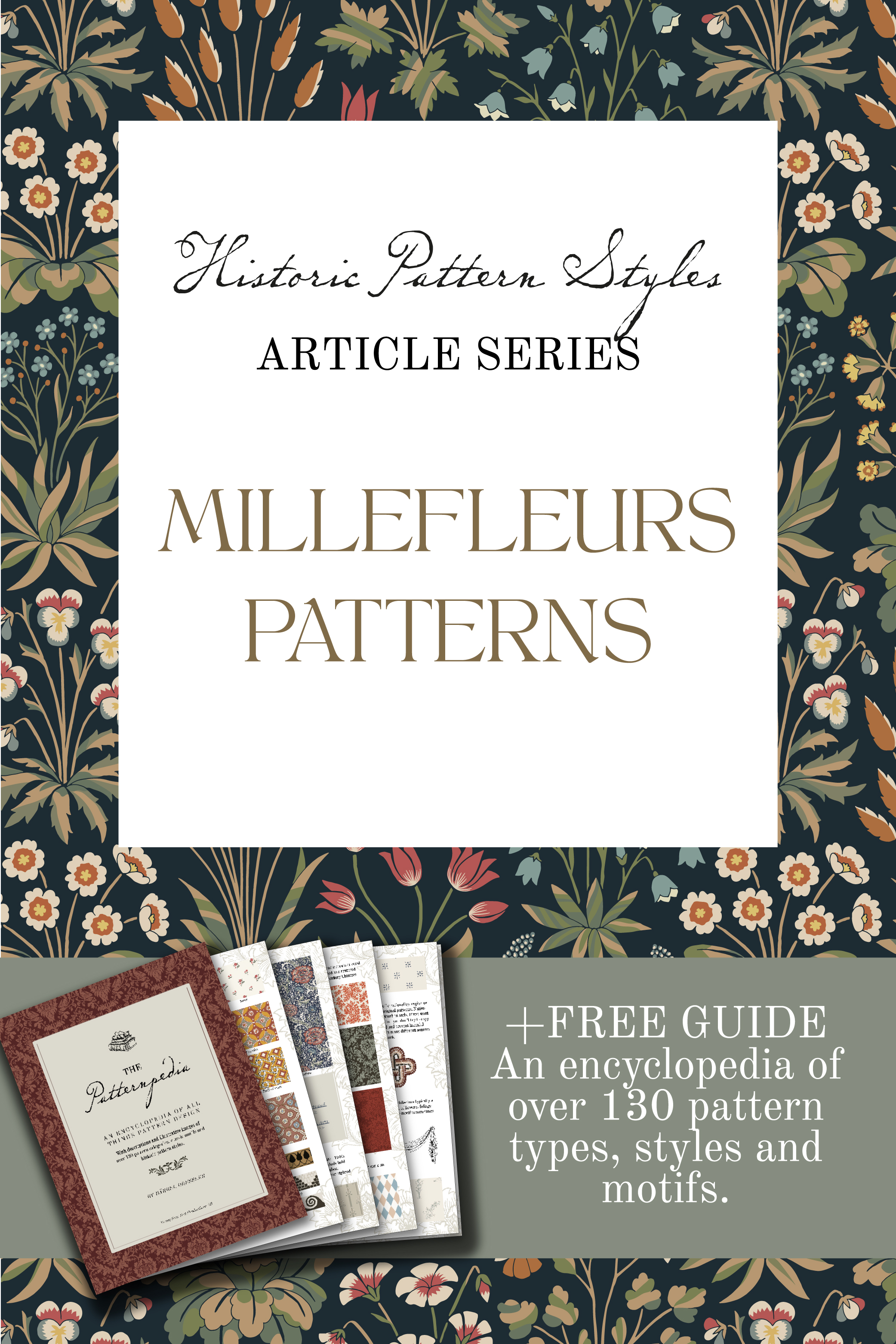
HISTORY OF MILLEFLEURS
Millefleurs means ”thousand flowers” in French and refers to a type of background packed with flowering plants.
MIDDLE AGES & RENAISSANCE
These Millefleurs motifs were originally used on European tapestries during the late Middle Ages and the early Renaissance from around 1400 to 1550.

16th century Millefleurs tapestry, Belgium. Image from Minneapolis Institute of Arts.
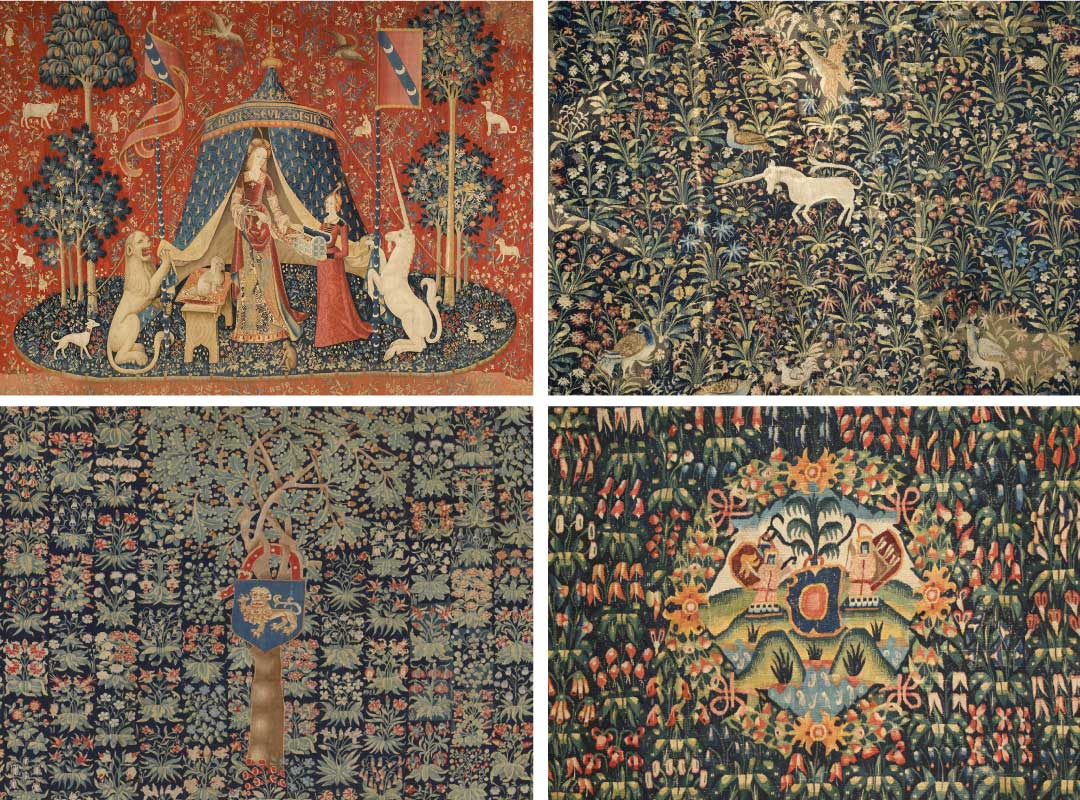
Top left: One of six tapestries in the set called The Lady and the unicorn, designed in Paris around 1500 and woven in Flandern. On display in Musée de Cluny in Paris.
Top right: 16th century Millefleurs tapestry with a common unicorn center motif, Flandern. Image from V&A museum.
Bottom left: 16th century Millefleurs tapestry with heraldic center motif, Flandern. Image from Galerie Deroyan.
Bottom right: 16th century Millefleurs tapestry with coat of arms, Flandern. Image from Gallerie Deroyan.
ARTS AND CRAFTS MOVEMENT
This style had a notable revival during the Arts and Crafts movement, a lot thanks to William Morris’s obsession for everything medieval and who also started to design and produce his own tapestries including Millefleurs motifs. You can find Millefleurs motifs and influences in many Arts and Crafts pattern designs used for fabric and wallpaper.
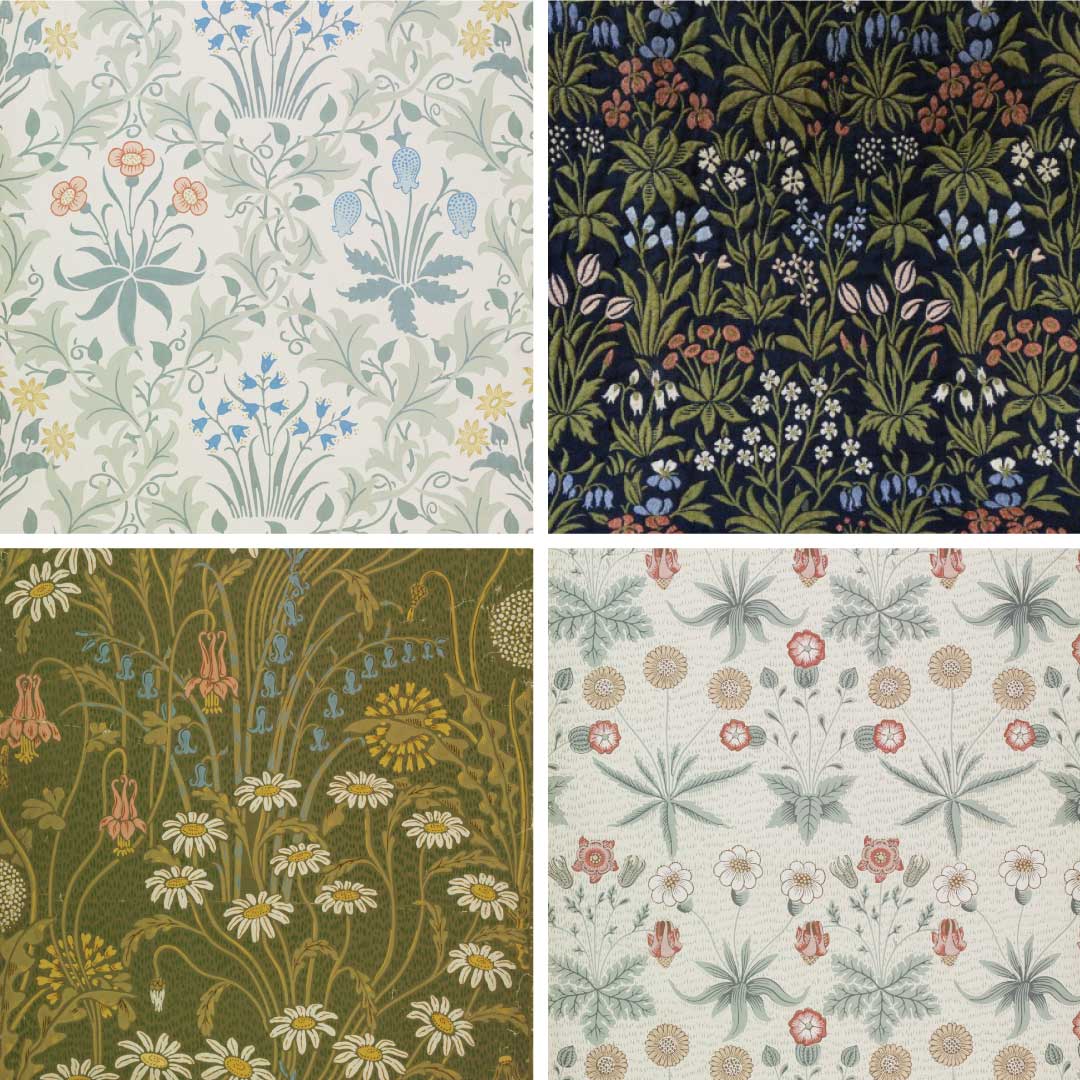
Top left: Celandine, by John Henry Dearle. Image from V&A Museum.
Top right: Millefleurs, by John Henry Dearle. Image from Cooper Hewitt museum.
Bottom left: Meadow Flowers, by Walter Crane. This would be considered a Millefleurs inspired pattern, where the motifs are overlapping more than usual. Image from V&A Museum.
Bottom right: Daisy, by William Morris. Image from V&A Museum.
THE CHARACTERISTICS OF MILLEFLEURS
We can divide the Millefleurs pattern style into traditional designs and evolved and more contemporary.
When it comes to traditional Millefleurs designs and patterns there are some common elements and principles that make up this characteristic style. The evolved Millefleurs breaks and bends these rules a bit and creates new and exciting versions.
THE MILLEFLEURS MOTIFS
The traditional medieval tapestries usually have main motifs at the center - of a pastoral scene, animals or heraldic symbols - surrounded by Millefleurs motifs of plants and flowers that cover the background.
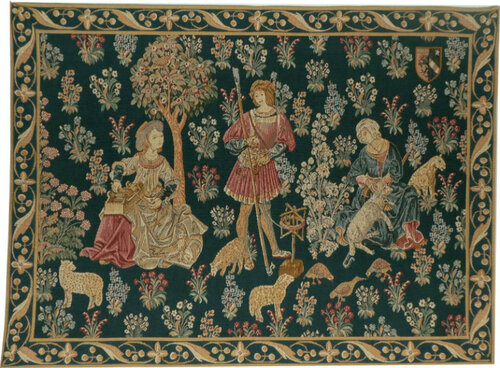
Reproduction of 15th century tapestry depicting woolworkers, surrounded by Millefleurs motifs. Image from thetapestryhouse.com.
The background Millefleurs motifs consists of plants of several different species, both garden plants and wild flowers. An important detail here is that the traditional Millefleurs motifs are showing the full flowering plants, with leaves, stems, flowers and buds.
Traditional Millefleurs motifs are realistically depicted, but simplified. In the medieval tapestries these motifs were all unique, not repeated and reused in other places of the designs. But in later tapestries you can see how the weaver has reflected the motifs on one side to the other.
MILLEFLEURS COMPOSITION
Motif type: A traditional appearing Millefleurs pattern have separated motifs, not seamlessly continuing tendrils or stems that attached them with each other.
Repeat layout: a traditional Millefleurs pattern have a non-symmetrical layout, where the plants are placed without any specific order or repetition. There is no specific rule regarding the type of repeat, whether they are typically arranged in a straight layout, half drop or brick , but in many Arts and Crafts Millefleurs influenced patterns the motifs are arranged either in a straight or diagonal layout.
Spacing: The motifs are traditionally arranged in a quite dense layout, but typically not so dense that they overlap. And if they do it’s only slightly. There are examples of more sparse layouts, especially in some of the evolved versions.
Direction: Millefleurs are one directional patterns, with the motifs seen from the side, just like a landscape pattern, but in a miniature version. Newer and more contemporary versions influenced by the traditional Millefleurs are often tossed and can be viewed from any direction.
Depth: Millefleurs are always flat, with only one layer, but in some Arts and Crafts patterns there are small fillers of grass.
Colors: Millefleurs mainly use primary and secondary colors for the plant motifs - blue, red, yellow, orange and 2-3 different types of green and yellow-green and then a dark background color. Most commonly the number of colors used are 5 + the background color.
In the newer Millefleurs inspired versions the patterns are often made in two colorways - with one dark and one bright background.
The motif elements of a traditional styled Millefleurs consists of two colors at least. For example, the flowers have a base color of red or blue and then with a brighter tone or even cream for details and accents. The leaves are colored in a couple of greens or blue-greens and a yellow-green for a highlight spot.
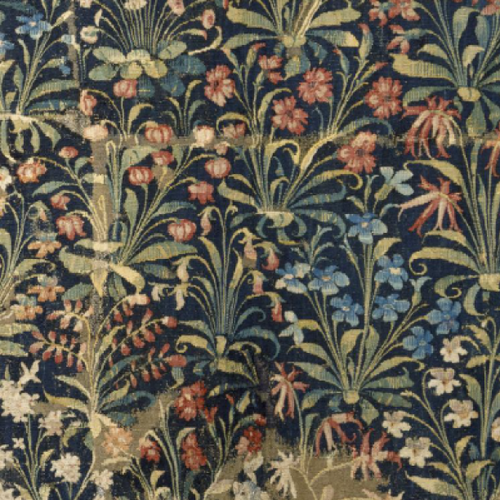
Other designers with influences from the Millefleurs pattern style:

From left: Culpeper, Neisha Crosland; Spring Bells, Josef Frank; Atelier Martine.
WANT TO LEARN MORE ABOUT HISTORICAL AND CLASSICAL PATTERN STYLES, TYPES AND MOTIFS?
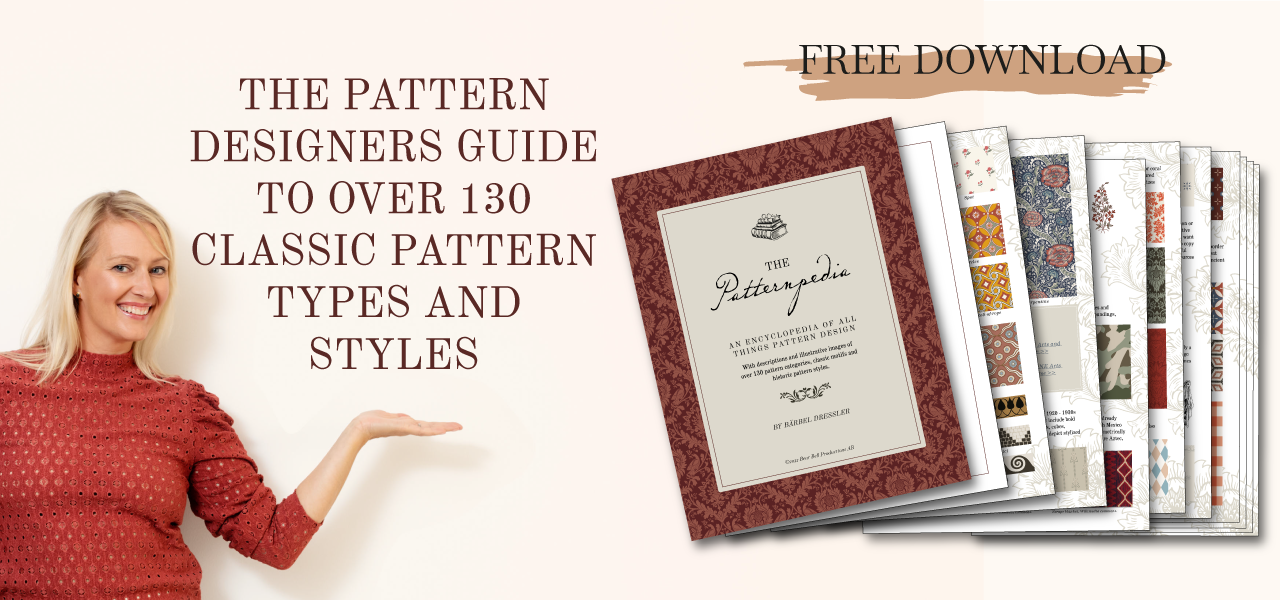
DESIGN & CREATE YOUR OWN MILLEFLEURS
Creating Millefleurs inspired patterns isn’t very difficult. The trick is to make the flower motifs fit together with little spacing. My tip is to draw the motifs so that the overall shapes follow each other nicely and won’t create holes or alleyways.
Here’s a Millefleurs pattern I’ve designed and the drawings I used to create the motifs:

6 IDEAS FOR MILLEFLEURS
Here are some tips and inspiration for designing your own Millefleurs pattern.
I like to start out with a theme, it makes it easier to know what to do and decide what motifs to include.
Millefleurs is all about mixing different plants, and another tip is to use flowers from the same season.
But remember, there are no rules. In fact, I want to challenge you to make your own unique and personal Millefleurs version!
1. Flowers that grow where you live; in your garden or in the wild.
2. Typical flowers growing in your country.
3. State or region flowers.
4. Exotic flowers: visit a botanical garden, or even a flower shop.
5. Flowers often depicted in historical paintings: visit a museum and see what you can find.
6. A rose garden; a Millefleurs using only different types of the same species.
Use these ideas to start designing, or use them to come up with your own ideas for themes and motifs.
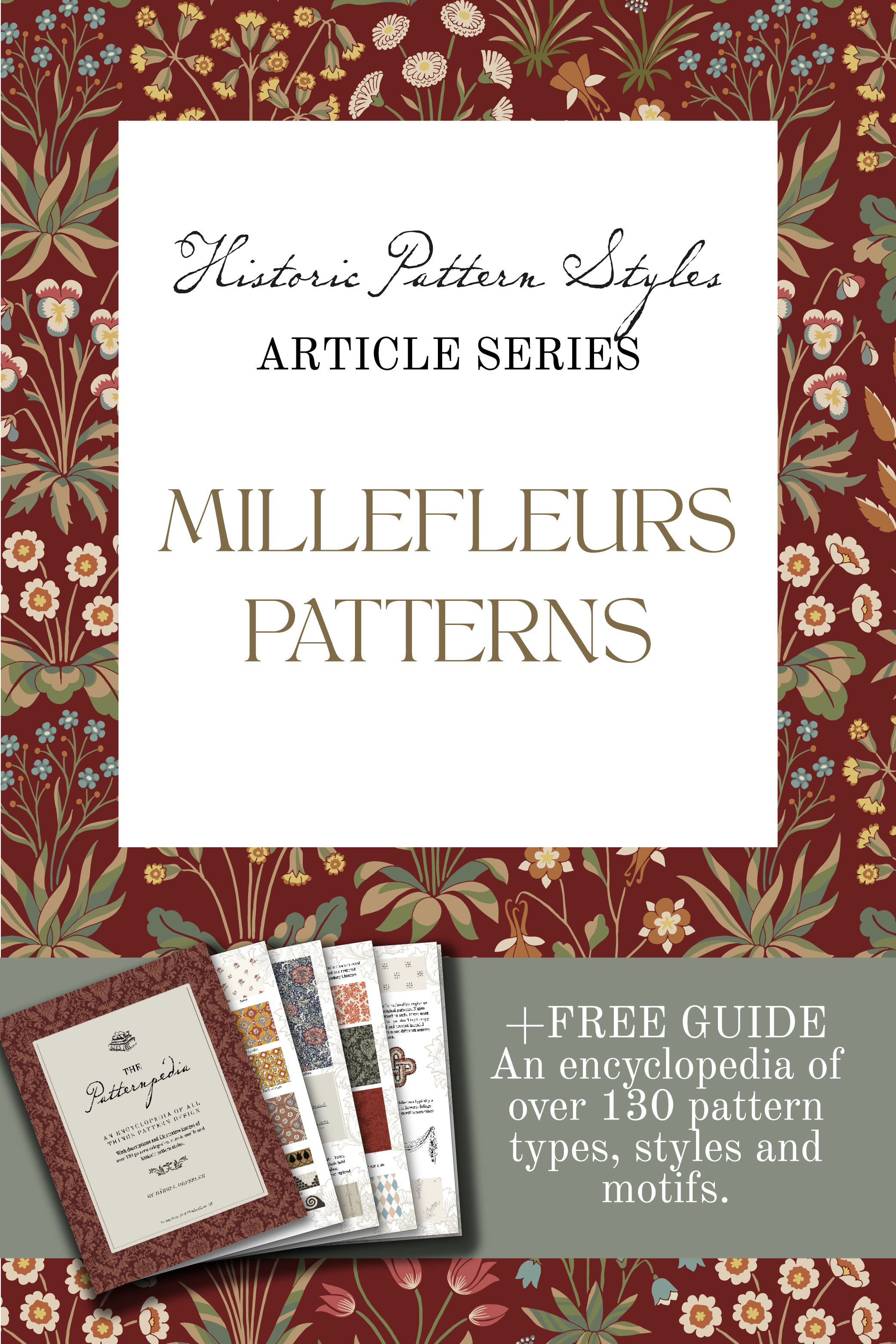
Pop a pin in it and save for later!
